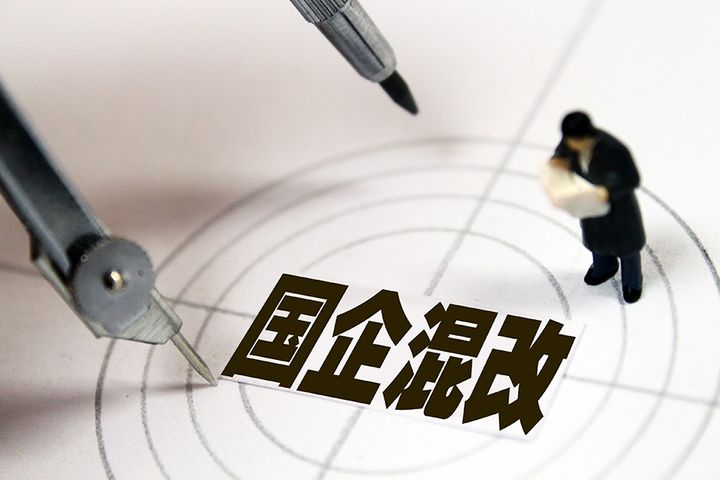 Shanghai Issues Measures to Spur SOE Mixed-Ownership Reform
Shanghai Issues Measures to Spur SOE Mixed-Ownership Reform(Yicai Global) Sept. 6 -- Shanghai's competitive state-owned enterprises are to complete integrated listing or listing of their core assets by 2022 under an SOE reform plan the city issued yesterday and which took effect on Aug. 20.
The Shanghai branch of China's State-Owned Assets Supervision and Administration Commission recorded a total of 42 SOEs under its watch, 30 of which are competitive, including six financial institutions, among them Shanghai Pudong Development Bank, and 24 industrial-types, such as Shanghai Electric and SAIC Motor, nine are functional ones like Shanghai Lingang Economic Development (Group), and three are public-service-type, as in the case of Shanghai Shentong Metro Group, the Shanghai SASAC website shows.
The 'implementation plan' lists 26 measures in seven sections, one of which focuses on pushing mixed-ownership reform.
The thrust of this measure is to promote competitive SOEs in achieving listing, while functional and service SOEs are to advance their development of competitive businesses with a view to listing these arms. Further, they must also promote open market-oriented joint restructuring and promote the concentration of resources to advantageous and main enterprises.
Shanghai had 13,131 SOEs by late last year, which held an aggregate CNY2.7 trillion in state assets in an annual rise of 7.5 percent, and an over twofold average capital preservation and appreciation rate.
Only one Shanghai state-asset system had completed an integral listing before 2011, and six did so between 2011 and 2015. The 42 units that instituted mixed-ownership of nine companies that recently participated in the special reform movement introduced CNY1.4 billion in non-state capital.
Upping Their Game
The plan also proposes boosting the coaching, guidance and service to companies in emerging sectors to help them enter capital markets, and to assist a set of companies to achieve multiple listings and encourage state holding companies to lure strategic investors and to aid the units of listed state holding companies to institute mixed-ownership reform.
The measures also advocate vigorously promoting stock ownership by SOE employees by expanding the scale of staff shareholding pilots and allowing management and key personnel in integrally listed enterprises or those listing core business assets to take part in such stake holding during the process of mixed ownership reforms. It will also ease the restrictions on the stakes held by a single employee in tech and innovative firms and explore a model of investing in and paying for these equities with technological achievements instead of money.
Many issues have also arisen in Shanghai's reform targeting state-owned assets and firms. For example, the boundaries regarding the rights and responsibilities among state-backed regulatory bodies, operating firms and state-owned enterprises are unclear. The state-owned economy's ability to serve the development plans of the state and cities is insufficiently improved. These firms' management is non-standardized and inefficient, and the mechanism of state-owned companies' marketization is not optimum.
The plan has also proposed measures of arousing employees' motivation and accumulating (gathering) state-owned firms' energy for reform and growth. For instance, exploring, making and implementing the more suitable salary distribution institution that the reform and development of state-owned assets and companies calls for on the leaders of these firms, which are under the administration of the municipal government.
The government will encourage state-owned listed holding companies to implement equity incentive plans, rationally set the standards and conditions for performance reviews as per different sectors' features and ease restrictions on the profits of these incentives, per the plan, which will explore and pilot the equity incentive scheme in Shanghai's state-backed listed financial companies and gradually expand the applicable scope of the pilot work to non-listed SOEs.
The Shanghai SASAC has collectively implemented over 70 positive incentive projects in recent years with clear effects. Seven were completed in the first half alone, with four among listed firms.
Editor: Ben Armour